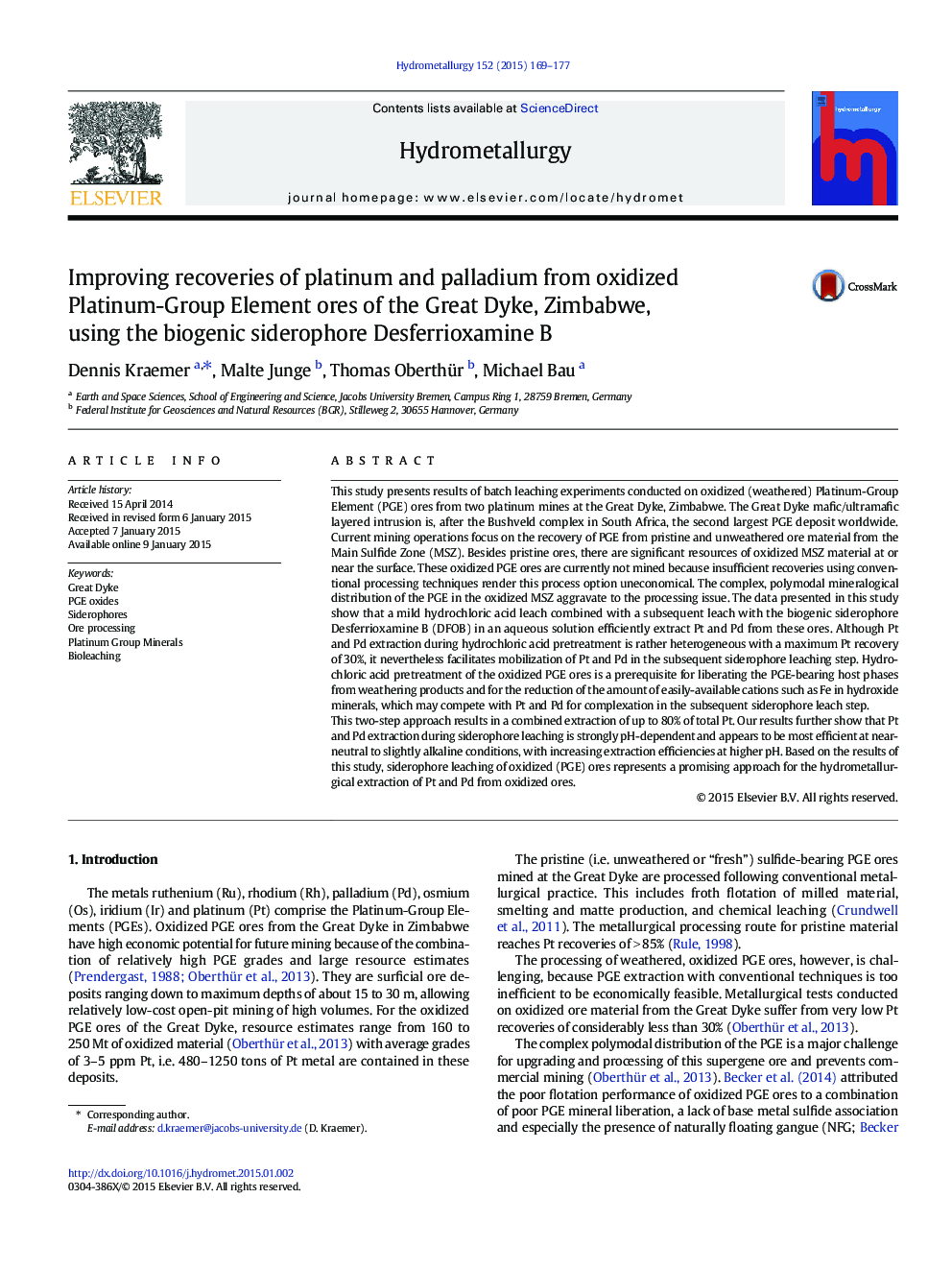| Article ID | Journal | Published Year | Pages | File Type |
|---|---|---|---|---|
| 211955 | Hydrometallurgy | 2015 | 9 Pages |
•A new approach on processing of oxidized Platinum-Group Element ores using a biogenic siderophore is presented.•Oxidized PGE ores represent an important future resource of platinum and palladium.•The siderophore Desferrioxamine B mobilizes Pt and Pd after a 0.5 M hydrochloric acid pretreatment.•Up to 80% Pt was solubilized from oxidized ores with the presented leaching technique.
This study presents results of batch leaching experiments conducted on oxidized (weathered) Platinum-Group Element (PGE) ores from two platinum mines at the Great Dyke, Zimbabwe. The Great Dyke mafic/ultramafic layered intrusion is, after the Bushveld complex in South Africa, the second largest PGE deposit worldwide. Current mining operations focus on the recovery of PGE from pristine and unweathered ore material from the Main Sulfide Zone (MSZ). Besides pristine ores, there are significant resources of oxidized MSZ material at or near the surface. These oxidized PGE ores are currently not mined because insufficient recoveries using conventional processing techniques render this process option uneconomical. The complex, polymodal mineralogical distribution of the PGE in the oxidized MSZ aggravate to the processing issue. The data presented in this study show that a mild hydrochloric acid leach combined with a subsequent leach with the biogenic siderophore Desferrioxamine B (DFOB) in an aqueous solution efficiently extract Pt and Pd from these ores. Although Pt and Pd extraction during hydrochloric acid pretreatment is rather heterogeneous with a maximum Pt recovery of 30%, it nevertheless facilitates mobilization of Pt and Pd in the subsequent siderophore leaching step. Hydrochloric acid pretreatment of the oxidized PGE ores is a prerequisite for liberating the PGE-bearing host phases from weathering products and for the reduction of the amount of easily-available cations such as Fe in hydroxide minerals, which may compete with Pt and Pd for complexation in the subsequent siderophore leach step.This two-step approach results in a combined extraction of up to 80% of total Pt. Our results further show that Pt and Pd extraction during siderophore leaching is strongly pH-dependent and appears to be most efficient at near-neutral to slightly alkaline conditions, with increasing extraction efficiencies at higher pH. Based on the results of this study, siderophore leaching of oxidized (PGE) ores represents a promising approach for the hydrometallurgical extraction of Pt and Pd from oxidized ores.
